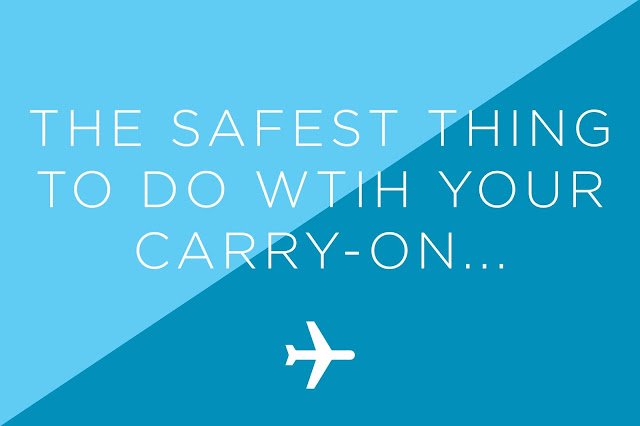The odds of being killed on a single airline flight are one in 4.7 million. While crash fatalities are at an all-time low, safe travelers are prepared for the worst. Remember these life-saving habits every time you fly.
Your carry-on bag
…Is leave it on the plane. Flight crews ask you to keep your luggage clear of the aisles for a reason; in the event of an evacuation, you don’t want it blocking an escape route. With as few as 90 seconds to evacuate a burning place, the precious time spent reaching for luggage could be a life and death decision for someone. Here are 13 secrets airlines don't want to tell you (but every flier should know).
Your seat
…Is behind the wings. A Popular Mechanics study of 20 commercial jet crashes with both fatalities and survivors found that passengers seated in the rear cabin (behind the wings) had a 69 percent chance of survival, compared with just 49 percent for those in first class. But you don’t have to sacrifice leg room for safety’s sake: exit rows are perhaps the safest place to sit on the whole plane. In the event of an evacuation, the closer you are to an exit, the higher the chance you’ll escape unscathed.
How to sit
…Is to brace yourself (literally). In a 2015 crash simulation, Boeing found that passengers who both wore their seat belts and assumed a brace position (feet flat, head cradled against their knees or the seat in front of them if possible) were likeliest to survive a crash. Seat-belted fliers who did not brace suffered serious head injuries, and those with no seat belts or bracing died on impact.
During a crash
… Is put on the oxygen mask the minute it drops. During a loss of cabin pressure, the fall in oxygen can knock you unconscious in as little as 20 seconds. Listen to your flight attendants: Always secure your oxygen mask before helping others. You can’t help if you can’t breathe. Here's what flight attendants are secretly thinking about you.
What to wear
…Is un-flammably. The National Transportation Safety Board tells us that 68 perent of plane crash fatalities occur in post-crash fires, not in the initial impact. Fortunately, here’s a scenario you can plan for days in advance while you pack your suitcase: On the day you’re flying, avoid wearing flammable synthetic fibers like polyester and nylon. Instead, opt for natural materials like cotton or wool (good news if you’re a sweatpants-at-the-airport kind of person). It’s also a good idea to favor long pants (like jeans) and a long-sleeved shirt for extra protection from flames and sharp objects.
Your carry-on bag
…Is leave it on the plane. Flight crews ask you to keep your luggage clear of the aisles for a reason; in the event of an evacuation, you don’t want it blocking an escape route. With as few as 90 seconds to evacuate a burning place, the precious time spent reaching for luggage could be a life and death decision for someone. Here are 13 secrets airlines don't want to tell you (but every flier should know).
Your seat
…Is behind the wings. A Popular Mechanics study of 20 commercial jet crashes with both fatalities and survivors found that passengers seated in the rear cabin (behind the wings) had a 69 percent chance of survival, compared with just 49 percent for those in first class. But you don’t have to sacrifice leg room for safety’s sake: exit rows are perhaps the safest place to sit on the whole plane. In the event of an evacuation, the closer you are to an exit, the higher the chance you’ll escape unscathed.
How to sit
…Is to brace yourself (literally). In a 2015 crash simulation, Boeing found that passengers who both wore their seat belts and assumed a brace position (feet flat, head cradled against their knees or the seat in front of them if possible) were likeliest to survive a crash. Seat-belted fliers who did not brace suffered serious head injuries, and those with no seat belts or bracing died on impact.
During a crash
… Is put on the oxygen mask the minute it drops. During a loss of cabin pressure, the fall in oxygen can knock you unconscious in as little as 20 seconds. Listen to your flight attendants: Always secure your oxygen mask before helping others. You can’t help if you can’t breathe. Here's what flight attendants are secretly thinking about you.
What to wear
…Is un-flammably. The National Transportation Safety Board tells us that 68 perent of plane crash fatalities occur in post-crash fires, not in the initial impact. Fortunately, here’s a scenario you can plan for days in advance while you pack your suitcase: On the day you’re flying, avoid wearing flammable synthetic fibers like polyester and nylon. Instead, opt for natural materials like cotton or wool (good news if you’re a sweatpants-at-the-airport kind of person). It’s also a good idea to favor long pants (like jeans) and a long-sleeved shirt for extra protection from flames and sharp objects.





